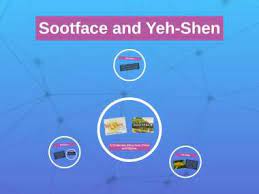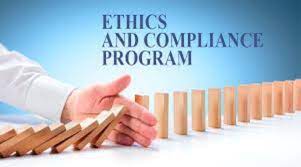Gerontological Nursing: Case Analysis
Gerontological Nursing: Identification and Description of the Interviewed Individual
The interviewee is a male individual aged 80 years, and who currently stays with his wife and their son in the city. This client is a retired accountant who has been out of work for the past five years. Also, he is married with three children; two sons aged 25 and 36, and one daughter aged 40. Furthermore, the patient participates in three major health promotion activities including walking regularly, limiting consumption of salt and sugary foods, and participation in community’s social support groups.
The interviewee believes that increased consumption of fruits and foods rich in sorghum and millet help people to live long. Being 80 years old, the interviewee is considered to be the oldest family member who has ever reached such age. Furthermore, the interviewee is on insulin medication to help with management of diabetes clinical problem. He visits the doctor at least twice a week for a general medical check-up and to obtain clinical guidance on how to effectively manage diabetes symptoms.
Gerontological Nursing: Identification and Description of the Cultural Implications for the Individual
Personal values and beliefs about old age and health have a great implication to the care of the interviewee. For instance, the interviewee’s philosophy on living a long life may make it difficult for him to appreciate the fact that aging is a normal process. He believes that living long is God’s blessings while deaths that occur when people are still young are associated with curses.
Also, the interviewee has unique thoughts about people who are considered to be of old age. He feels that for a person to qualify to be of old age, lack the capacity to perform daily physical activities, be unable to maintain an upright posture, and must put on glasses to assist with vision. These cultural beliefs may impact negatively on the care of this client because the clinician will find it difficult to change the interviewee’s perceptions and replace them with new ones that can promote positive health outcomes (Shrack et al., 2016).
Additional cultural implication related to the interviewed person include; his or her beliefs regarding health and illness and his values about health status and treatment of older adults. The most appropriate way of eliminating the impact of the person’s cultural values and beliefs is through maintenance of cultural competence throughout the interview and when giving interventions.
Gerontological Nursing: Comprehensive Functional Assessment
To establish what the interviewee can accomplish as well as those that he cannot do properly at his age, a comprehensive functional assessment has been performed using four tools namely; Tinetti Balance and Gait Evaluation, Katz Index of Activities of Daily Living, Assessment of Home Safety, and The Barthel Index. The person’s movement ability has been assessed using the Tinetti Balance and Gait Evaluation.
The client’s ability to perform various activities independently has been evaluated using the Katz Index of Activities of Daily Living. The most appropriate tool that has been used to measure the safety of the patient’s environment is the Assessment of Home Safety, while that which has been used to examine whether the identified individual can accomplish some daily tasks independently is The Barthel Index.
A duly filled Tinetti Balance and Gait Evaluation, Katz Index of Activities of Daily Living, Assessment of Home Safety, and The Barthel Index tools used during the interview have been provided in the Appendix section of this paper.
Gerontological Nursing: Comparison of Age-Related Changes
There are similarities and differences between the expected age-related changes and those observed in the interviewee. Older adults are expected to present with some physiological, physical, pathological, sensory, and motor changes, which significantly affect their ability to perform their activities of daily living and to make various physiological controls. According to Shrack et al. (2016), older adults aged 65 years and above have problems with maintaining gait and balance.
Similarly, the interviewee experiences problems with maintaining gait and balance, both while he is seated and whenever he is standing. Also, Tkatch, Musich, MacLeod, Alsgaard, Hawkins, and Yeh, (2016) point out that older adults often need assistance with various activities of daily living such as dressing, cooking, washing, and toileting. Although the interviewee is 80 years old, he needs assistance only in certain activities of daily living such as rising from a chair.
However, he is still strong enough to feed alone once the food is made available for him. Older adults are at high risk of falls, and there is therefore great need to keep their home environment free from objects that may increase the possibility of falling (Phelan, Mahoney, Voit, and Stevens, 2015). Similarly, the interviewee is at a high risk of falling considering the fact he has a problem controlling balance and gait.
For this reason, his home environment is often kept free from equipment that may increase the risk of falling. Again, as it happens in older adults, the interviewee occasionally finds it difficult to control his bladder and bowel and therefore may always want people to stay around to assist.
Gerontological Nursing: Preliminary Issues Assessed from the Interview
Four major preliminary issues have been assessed from the interview. The four issues include; age-related changes that are taking place or that have taken place in the interviewee, health promotion activities that the interviewee is currently involved, the interviewee’s cultural values over old age and living longer, as well as actions that have been taken to promote safety at the interviewee’s home environment.
As Tkatch et al. (2016) explain, nurses who are providing care to older adults must be able to understand the impacts that their age-related changes have on their abilities to perform daily activities. Using this information, these nurses must recommend relevant health promotion activities for their clients, including how they can keep their home environment safe for living. The nature of care given as well as the nature of health promotion strategies recommended will depend on the client’s cultural values and beliefs over old age and long life (Tkatch et al., 2016).
From the current assessment, the interviewer has discovered that the interviewee has undergone various physiological, physical, pathological, sensory and motor-related changes as a result of old age that greatly affect his ability to perform daily activities. Furthermore, the interviewer has found that the client engages in a few health promotion activities such as frequently walking to keep fit and consuming fruits.
Through current assessment, it has also been established that some actions have been taken to keep the interviewee’s home environment safe by eliminating objects that may increase the risk of falls. Most importantly, the interviewer has found out that the interviewee believes that God helps people to survive through old age, that the society is less concerned about assisting the aging population, and that God promotes healing and recovery.
Based on results obtained from this assessment, the interviewer understands health problems that majorly occur in older adult as well as factors that must be taken into consideration when establishing the most appropriate health promotion strategies of the elderly (Shrack et al., 2016).
Gerontological Nursing: Alterations in Health
The interviewee has alterations in health in three major functional areas namely; physiological functions, motor functions, and physical functions. Concerning physiological functions, the interviewee is struggling to manage diabetes, which is a common chronic health problem among older adults. Due to old age, the interviewer’s body cannot control blood sugar levels as required, and hence the observed onset of diabetes (Kezerle, Shaley, and Barski, 2014).
As far as motor functions are concerned, the interviewee has a problem with bladder and bowel control, which makes him have short call accidentally and long call at any time. This problem occurs mainly because of reduced motor function, which is greatly influenced by old age (Westra, Savik, Oancea, Choromanski, Holmes, and Bliss, 2011).
Furthermore, the interviewee experiences physical problems related to balance and gait maintenance, which put him at high risk of falls. He has reported that he needs support when rising from a chair and when moving upstairs. This means that his physical movement has been limited by old age. Therefore, the nature of intervention that would be recommended for the interviewee must target physical, physiological, and motor functional areas described in this section (Tkatch et al., 2016).
Gerontological Nursing: Interventions for Identified Problems
Interventions should be implemented based on individual health problems that the interviewee is currently suffering from. The most appropriate interventions for diabetes include nutrition counseling, exercise training, and drug adherence training. The interviewee should be guided on those foods that he should avoid keeping his blood glucose level low. Also, he should be trained on the importance of exercise in managing weight, and his family members should be guided on how to offer the right support.
Again, the interviewee should be reminded of the importance of drug adherence in reducing diabetes symptoms (Kezerle, Shaley, and Barski, 2014; & Tkatch et. al., 2016). Three different interventions can be implemented to help the interviewee to reduce risks of falls. First, the interviewee should be guided on how to perform simple exercises that will help him to improve balance and gait.
Second, his family members should be taught on strategies for reducing hazards in the interviewee’s environment to maximize safety. Third, risks of falls can be eliminated if the patient is trained in safety-related behaviors and skills (Phelan et al., 2015). The best interventions for bowel and urinary incontinence include training the interviewee on how to perform pelvic floor muscle exercise, offering nutritional counseling, and educating him on usage and side effects of anticholinergic for the bladder that is overactive.
Frequent pelvic muscle exercise will help to avoid incontinence actions of the urinary bladder and the bowel. Again, the interviewee should be taught to limit fluid intake and to avoid foods that cause bladder irritation. Furthermore, correct use and adherence to anticholinergic can help the interviewee to effectively manage bladder and bowel incontinences (Westra et al., 2011).
References
Kezerle, L., Shaley, L. & Barski, L. (2014). Treating the elderly diabetic patient: Special considerations. Diabetes, Metabolic Syndrome, and Obesity: Targets and Therapy, 7: 391-400. doi: 10.2147/DMSO.S48898
Phelan, E. A., Mahoney, J., Voit, J. C. & Stevens, J. A. (2015). Assessment and management of fall risk in primary care settings. Medical Clinics of North America, 99(2): 281-293. doi: 10.1016/j.mcna.2014.11.004
Shrack, J. A., Cooper, R.,…& Harris, T. R. (2016). Assessing daily physical activity in older adults: Unraveling the complexity of monitors, measures, and methods. Journals of Gerontology-Series A Biological Sciences and Medical Science, 71(8): 1039-1048. 10.1093/gerona/glw026
Tkatch, R., Musich, S., MacLeod, S., Alsgaard, K., Hawkins, K. & Yeh, C. S. (2016). Population health management for older adults: Review of interventions for promoting successful aging across the health continuum. Gerontology and Geriatric Medicine, 2 (1): DOI: https://doi.org/10.1177/2333721416667877
Westra, B. L., Savik, K., Oancea, C., Choromanski, L., Holmes, J. H. & Bliss, D. (2011). Predicting improvement in urinary and bowel incontinence for home health patients using electronic health record data. Journal of Wound Ostomy & Continence Nursing, 38(1): 77-87.
Want help to write your Essay or Assignments? Click here.









